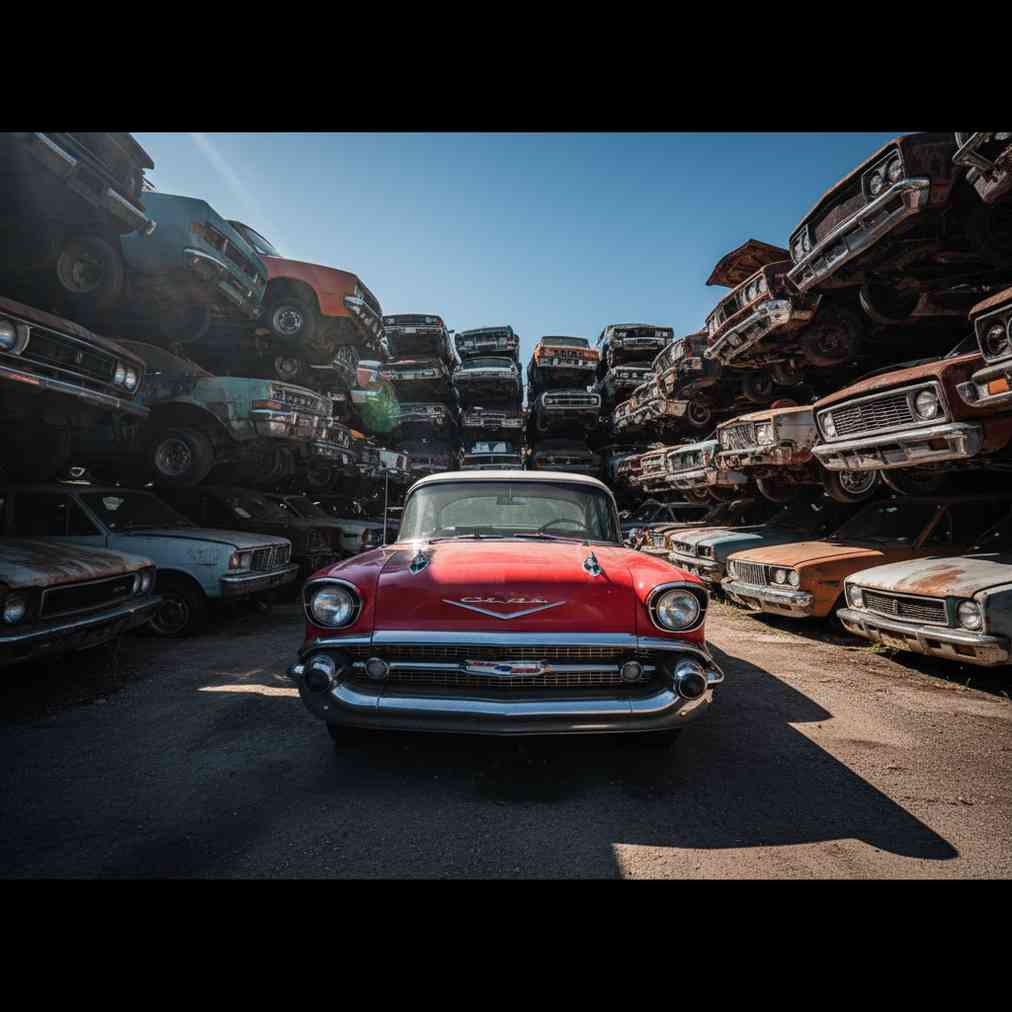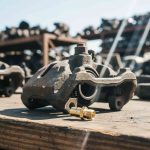Understanding The Yard Report Concept
The “Yard Report: What’s Hot and What’s Not” represents a revolutionary approach to connecting local automotive enthusiasts with the freshest inventory at auto salvage yards. This recurring content strategy transforms the traditional salvage yard experience into an engaging, timely resource that drives immediate action from DIY mechanics, restoration enthusiasts, and budget-conscious car owners.
Auto salvage yards have evolved far beyond simple scrap metal operations. Today’s modern facilities utilize sophisticated data science research methodologies to track inventory, predict demand, and optimize their operations. The Yard Report leverages this evolution by providing real-time insights into what’s available, what’s in demand, and what’s worth your time and money.
The Strategic Value of Real-Time Salvage Reporting
The concept behind the Yard Report addresses three critical factors that drive salvage yard success: scarcity, novelty, and local relevance. Unlike traditional automotive content that focuses on general repair advice, the Yard Report creates urgency by highlighting specific vehicles and parts available right now at specific locations.
- Immediate Inventory Updates: Fresh arrivals are documented before they’re picked clean
- Cost-Conscious Content: Highlights savings of 50% or more compared to new parts
- Local Community Focus: Drives foot traffic to specific yards in your area
- Environmental Impact: Promotes sustainable automotive recycling practices
- DIY Empowerment: Connects hands-on mechanics with hard-to-find parts
What Makes Parts “Hot” in Today’s Market
Understanding what drives demand in the salvage yard ecosystem requires insight into current automotive trends, repair patterns, and enthusiast preferences. The most successful Yard Reports focus on parts that generate immediate interest and action from readers.
| Hot Category | Examples | Why They’re In Demand |
|---|---|---|
| Classic & Rare Vehicles | 1980s-1990s sports cars, muscle cars, discontinued models | Growing collector interest, parts scarcity |
| High-Tech Parts | Infotainment screens, sensors, electronic modules | Expensive when new, complex repairs |
| Popular Late-Models | Honda Civic, Toyota Camry, Ford F-150 parts | High repair frequency, large owner base |
| Performance Parts | Turbochargers, sport suspensions, performance wheels | Modification and upgrade projects |
The Classic Corner: Nostalgic Gold Mines
Vehicles from the 1980s and 1990s represent the sweet spot for current Yard Report content. These “future classics” combine nostalgia with practical repair needs, as many of these vehicles are still daily drivers requiring maintenance. When a clean 1985 Chevy Caprice or 2002 Acura RSX arrives at salvage yards near you, it creates immediate excitement among enthusiasts.
Key parts that generate buzz in this category include original chrome trim pieces, intact dashboard components, factory stereo systems, and uncracked body panels. The appeal lies not just in functionality, but in authenticity – these are becoming increasingly difficult to find in good condition.
Technology-Rich Parts: The Modern Demand
Today’s vehicles are essentially computers on wheels, and when electronic systems fail, replacement costs can be staggering. Working infotainment screens, intact sensor clusters, and functional electronic control modules represent some of the highest-value finds in modern salvage yards.
The key to successful reporting on these parts lies in verification – readers want to know that complex electronic parts are actually functional, not just physically intact. This requires testing capabilities and technical knowledge that sets professional Yard Reports apart from casual observations.
Creating Compelling Yard Report Content Structure
The most effective Yard Reports follow a proven template that combines visual appeal with actionable information. This structure has been refined through analysis of real-world datasets showing reader engagement patterns and conversion rates.
The Opening Hook: Creating Immediate Interest
Every successful Yard Report begins with energy and urgency. The opening should immediately communicate what’s new, what’s exciting, and why readers need to act quickly. For example: “The yard is buzzing this week! We just processed a fresh load of inventory, and there are some real gems that won’t last long.”
- Lead with the hottest find: Mention the most exciting vehicle or part immediately
- Create urgency: Emphasize that desirable parts move quickly
- Set context: Briefly describe the general state of current inventory
- Include clear action items: Tell readers exactly how to reserve or purchase parts
Visual Documentation: The Power of Photography
High-quality, well-lit photographs are essential for effective Yard Reports. Readers need to see exactly what’s available, assess condition, and identify specific parts they need. The most engaging reports include multiple angles, close-ups of important details, and clear shots of any damage or wear.
Professional salvage yard photography goes beyond simple documentation. It tells a story about each vehicle’s history, highlights the most valuable parts, and helps readers make informed decisions about whether a trip to the yard is worthwhile.
Understanding What’s “Not Hot” and Why It Matters
While focusing on exciting finds drives engagement, acknowledging less exciting inventory serves important purposes. Standard commuter vehicles from 10-15 years ago might not generate headlines, but they represent the bread and butter of salvage yard operations and serve customers looking for common maintenance parts.
Including “What’s Not Hot” sections helps manage reader expectations while still providing valuable information. A brief mention that several common sedans arrived – perhaps a 2010 Toyota Camry, 2013 Nissan Altima, and 2008 Honda Accord – lets readers know that standard parts like alternators, water pumps, and common body panels are likely available.
The Economics of Ordinary Inventory
Common vehicles serve crucial economic functions in the salvage ecosystem. They provide steady revenue streams for yard operators and reliable parts sources for everyday repairs. Understanding this balance helps Yard Report creators maintain credibility while still focusing on exciting content.
| Vehicle Type | Reader Interest Level | Business Value |
|---|---|---|
| Rare/Classic Cars | Very High | High (One-time impact) |
| Popular Late-Models | High | Very High (Consistent demand) |
| Common Older Sedans | Low | Medium (Steady volume) |
| Commercial Vehicles | Medium | High (Specialized market) |
Heavy-Duty and Commercial Vehicle Opportunities
Trucks, vans, and utility vehicles represent a specialized but lucrative segment of salvage yard inventory. These vehicles often arrive with high-value parts intact, including functional tow packages, specialized tools, and heavy-duty drivetrain parts that can save commercial operators thousands of dollars.
When reporting on heavy-duty arrivals, focus on practical information that working professionals need: drivetrain specifications (4×4/AWD capabilities), payload ratings, and the condition of work-specific features like truck beds, ladder racks, and power take-off systems.
Maximizing Reader Engagement and Action
The ultimate goal of any Yard Report is to drive immediate action from readers. This requires clear calls-to-action, specific contact information, and urgency-building language that motivates people to visit the yard or call about parts availability.
Successful reports include multiple engagement opportunities throughout the content, not just at the end. They reference specific blog post dates when calling about parts, provide clear instructions for placing holds on desirable items, and include practical information about yard hours, location, and payment policies.
Building Community Around Salvage Culture
The best Yard Reports go beyond simple inventory updates to build community among local automotive enthusiasts. They celebrate successful finds, share repair stories, and create ongoing relationships between yards and customers. This community aspect transforms occasional visitors into regular customers who check reports weekly and plan their projects around new arrivals.
“The yard is more than just a place to buy cheap parts – it’s where automotive dreams get rebuilt, one piece at a time.”
Leveraging Technology for Better Reporting
Modern salvage yards increasingly use technology to track inventory, manage sales, and communicate with customers. The most effective Yard Reports integrate with these systems to provide accurate, up-to-date information that readers can rely on.
Advanced reporting might include integration with inventory management systems, automated alerts for specific parts requests, and even AI-powered analysis of which parts are likely to be in highest demand based on local vehicle populations and seasonal repair patterns.
The Environmental and Economic Impact
Beyond the immediate business benefits, Yard Reports serve important environmental and economic functions in local communities. They promote automotive recycling, reduce waste, and provide affordable repair options for budget-conscious car owners.
When someone chooses a used part over a new one based on a Yard Report recommendation, they’re participating in a circular economy that benefits everyone. The original car owner gets cash for their junk car, the yard operator runs a profitable business, and the parts buyer saves money while reducing environmental impact.
- Resource Conservation: Extends the useful life of automotive parts
- Waste Reduction: Keeps functional parts out of landfills
- Energy Savings: Reduces manufacturing demand for new parts
- Economic Development: Supports local businesses and job creation
- Affordable Transportation: Keeps older vehicles roadworthy longer
Future Trends in Yard Reporting
The salvage yard industry continues evolving rapidly, driven by changes in vehicle technology, consumer behavior, and environmental regulations. Future Yard Reports will need to adapt to cover electric vehicle parts, advanced driver assistance systems, and increasingly complex electronic parts that require specialized knowledge to evaluate and install.
The integration of big data analytics and predictive modeling will enable more sophisticated reporting that anticipates demand, tracks pricing trends, and provides deeper insights into which parts offer the best value for different types of projects.
Implementing Your Own Yard Report Strategy
Creating effective Yard Report content requires consistent effort, local knowledge, and strong relationships with salvage yard operators. The most successful implementations start small, focus on quality over quantity, and build audience gradually through consistent, valuable content.
Success metrics should focus on actionable engagement rather than just page views. Track how many readers contact yards about specific parts, monitor inventory turnover rates for featured items, and gather feedback from both yard operators and customers about the value they receive from report content.
The “Yard Report: What’s Hot and What’s Not” concept represents more than just automotive content – it’s a bridge between traditional salvage operations and modern digital marketing, creating value for yards, customers, and communities while promoting sustainable automotive practices. When implemented effectively, these reports transform casual browsers into engaged customers and turn occasional yard visits into regular treasure hunting adventures.





Leave a Reply
You must be logged in to post a comment.